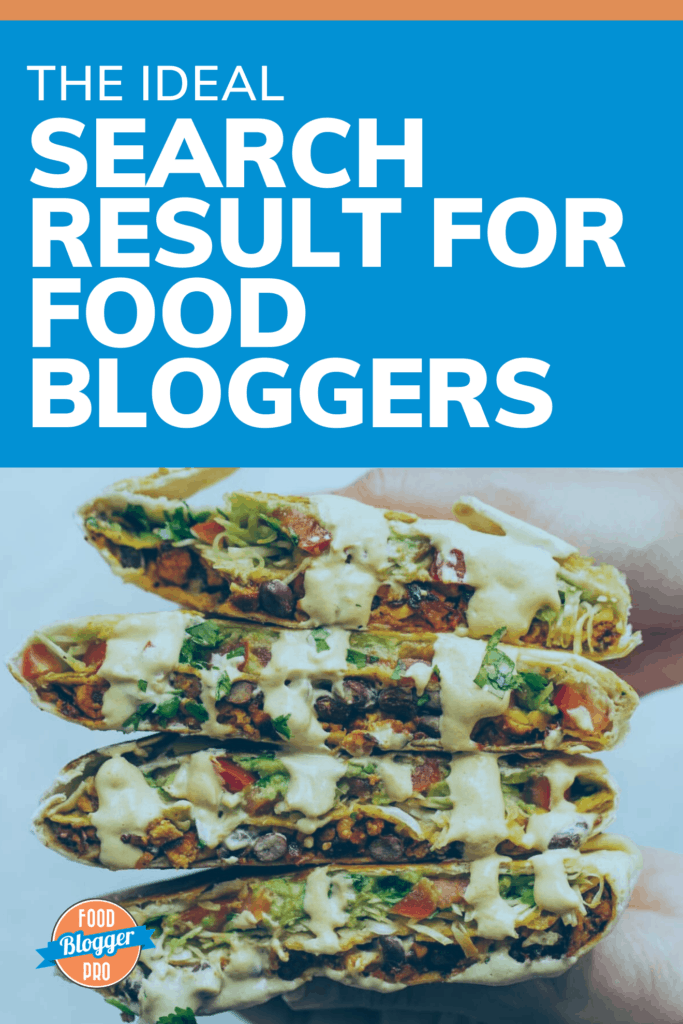
Have you ever Googled one of your recipes and been disappointed with how the result is displayed in Google (if it even displays at all)? This happens for one of two reasons:
- Google has decided to show your post that way.
- You haven’t set things up correctly on your blog.
You can’t do much about #1. Even if your blog is perfectly formatted Google might still decide that they’re going to leave out certain information from a search result. Google does as Google pleases. There’s not much you can do about it except make sure that you’re not falling victim to #2.
There is something that you can do about #2, as there are multiple components that factor into the ideal, rich search result for food bloggers. None of them are complicated, but they do require some time to set them up properly.
Keep in mind, this post is not necessarily about how to get your food blog to rank high in Google. It’s about how to set things up so your food blog has as many “bonus” search elements as possible.
I’m using the Vegan Crunchwrap Supreme recipe from Pinch of Yum as an example for this post. You can view the original post here and the search result here. Otherwise, here’s a screenshot of the search result:
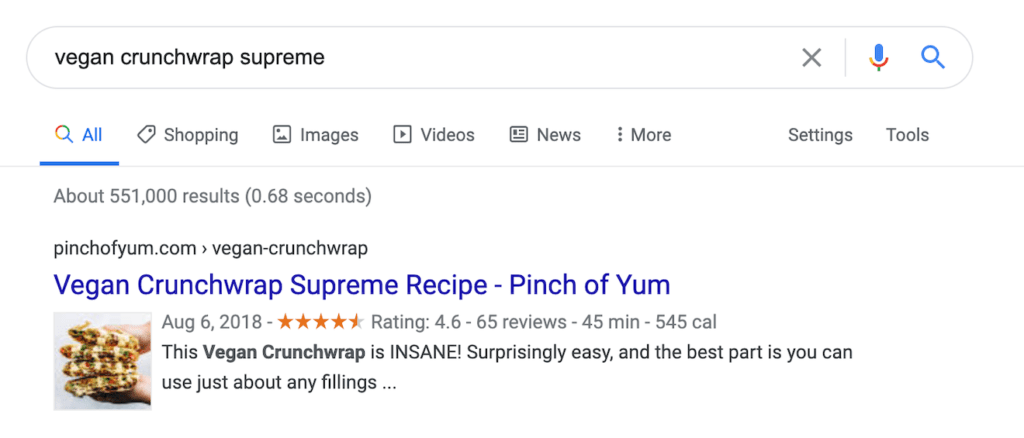
Note #1: It’s important to know that Google doesn’t automatically reflect updates in the search results (remember, Google does as Google pleases). If you want to check to see if things are formatted correctly you should use Google’s Rich Results Test.
Note #2: We’ll be using the term “keyword” or “keyword phrase” in this post. Your keyword phrase is the phrase that you’re trying to rank for in Google. The keyword phrase for a recipe post is usually just the name of the recipe. In our example, the keyword phrase is “vegan crunchwrap supreme.” If we wanted to try to rank for a more competitive (and harder to rank for) keyword we could use “vegan crunchwrap” or just “crunchwrap.”
Note #3: This is considered a “rich result” or “rich snippet” because it displays all of these fun “extras” – ratings, calories, a description, an image, etc.
Let’s break down each element and talk about how you can replicate these results for your food blog.
1. Title and Blog Name

The biggest part of any search result is the article (or in our case, recipe) title and the blog name.
Google pulls the title of the post here, rather than the title of the recipe, so it’s important to title your posts with the name of your recipe whenever you can.
Not only that, title is also a ranking factor, so you’ll want to make sure your post titles are optimized and include your keyword.
We have this set up in the SEO plugin we use, Yoast SEO. If you download the plugin and go to SEO > Search Appearance > Content Types, you’ll see this:
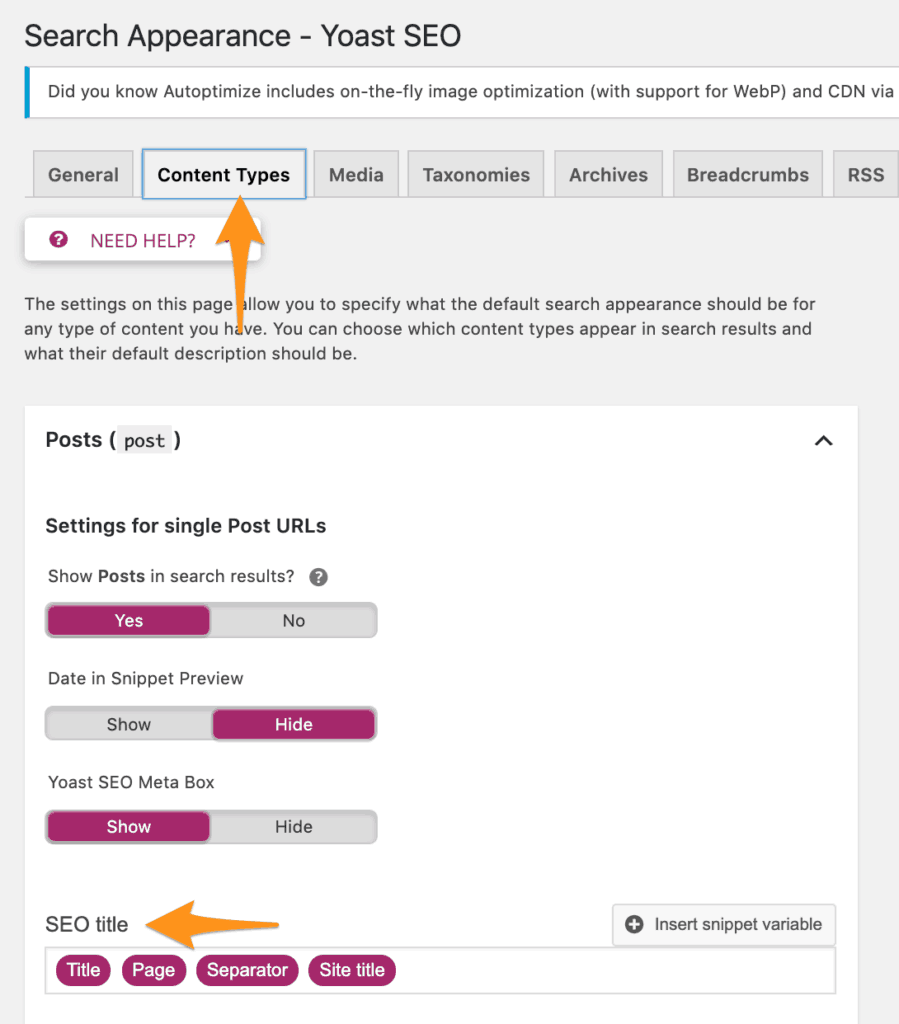
For Posts (which is how we publish our recipes), the SEO title format is set to Title, Page, Separator, Site title. In this example, that translates to, Vegan Crunchwrap Supreme Recipe – Pinch of Yum, which is what we see in our search results!
Pretty nifty, huh?
2. Recipe Image

If you do a quick Google search, you’ll notice that some results include images and some don’t. Why is that?
Images in search results come directly from the post’s structured data. We upload the photo directly into our recipe plugin, Tasty Recipes, and that’s the image Google will show in search results – most of the time.
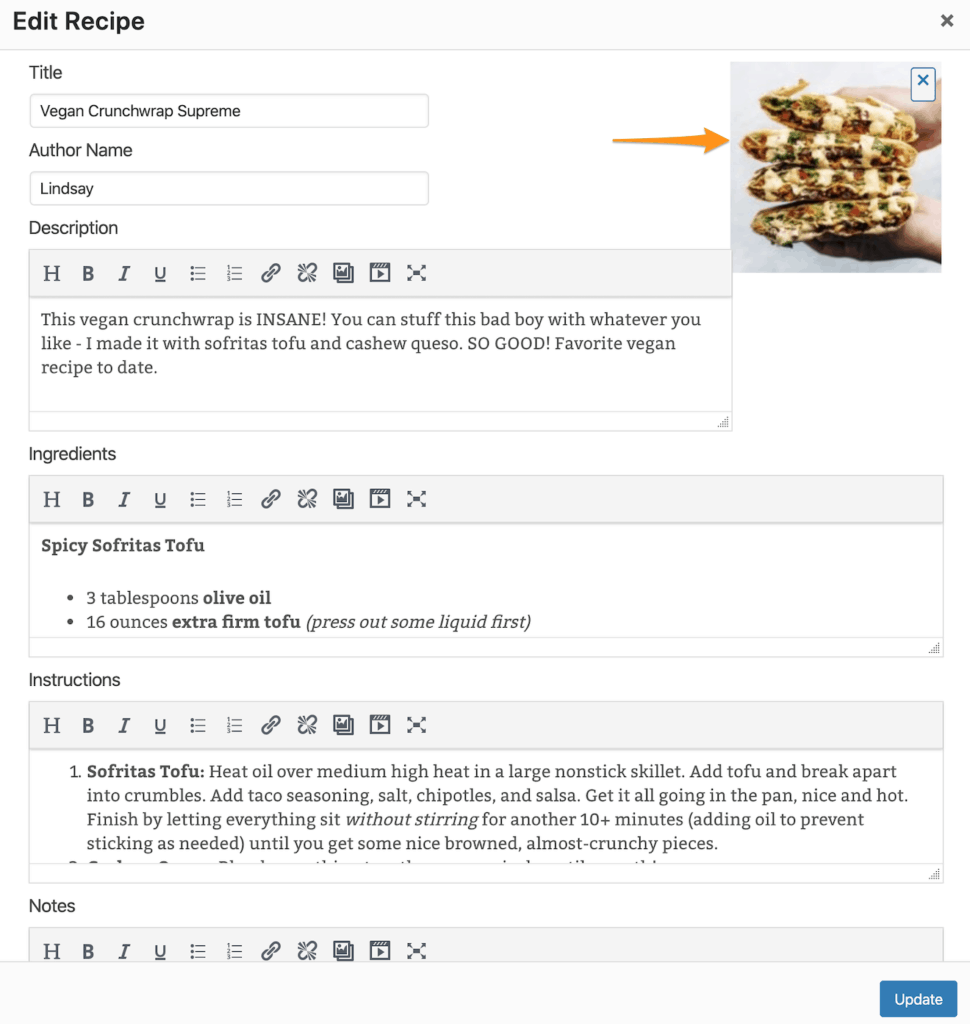
Why do I say, “most of the time?” Google does what Google wants. Even if you upload an image there, it’s up to Google to show it in search results.
That said, you’ll want to make sure your image is optimized for search results on Google. Here’s a quick support article from our friends over at WP Tasty all about choosing the best images for SEO.
👉Want to learn more about structured data? Check out this article: “What is Recipe Schema and How Does it Impact My Blog?” 👈
3. Recipe Rating

The recipe ratings functionality usually comes bundled with a recipe plugin. Since we use Tasty Recipes, it allows readers to leave recipe ratings whenever they leave a comment on Pinch of Yum.
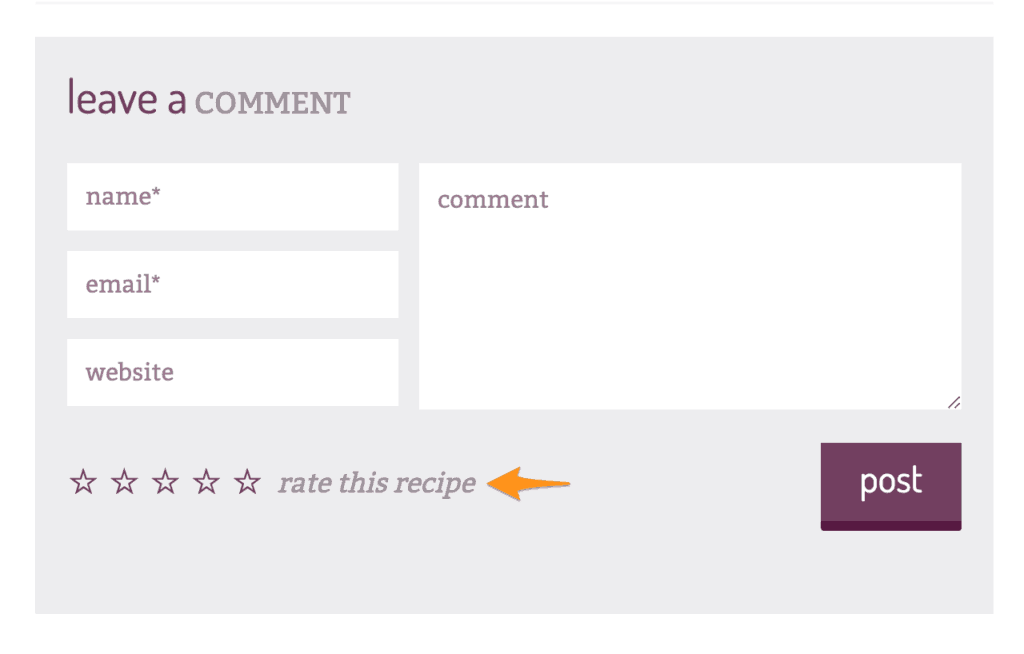
Google will show the average rating and the total number of reviews in the search results.
4. Time and Calories

Two other pieces of information that Google pulls straight from our structured data via our recipe plugin are time and calories.
We set that information within the recipe plugin itself:
Time and calories are what Google calls “recommended” properties, but we always like to give Google as much information about our recipes as possible.
Filling out this information is simple, is quick, and it gives our readers and Google more information about our recipes. See how important a recipe plugin is?!
👉If you need help figuring out which recipe plugin is best for you, check out this article: “Choosing a WordPress Recipe Plugin.” And if you’re a Food Blogger Pro member, be sure you check out our Understanding Recipe Plugins course! 👈
5. Description

Notice how the description under the search result is an actual description of the recipe rather than the first few sentences in the post or an ingredient list?
That’s by design! We setup a recipe description for each post using our Yoast SEO plugin:
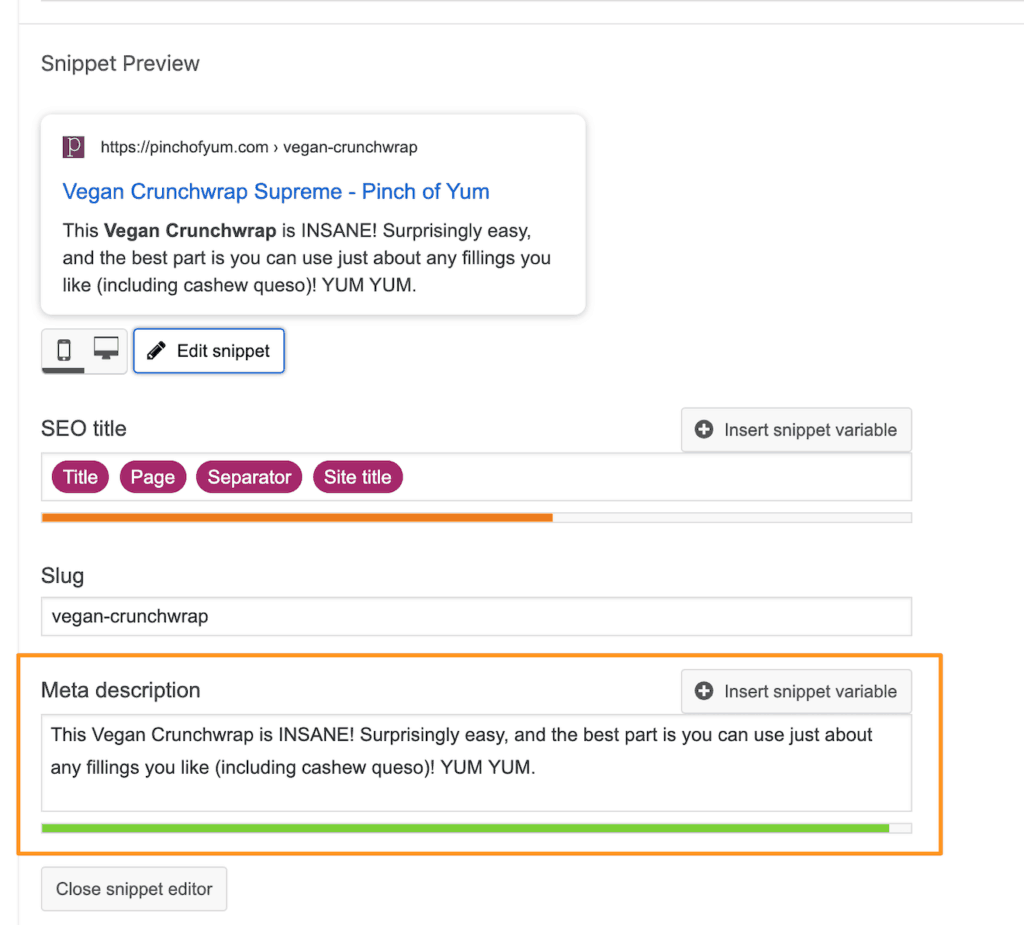
The Meta description should be descriptive of the recipe, it should include your keyword, and it should entice the reader to click on the result.
Check Your Work
That’s a [crunch]wrap! You can check to see if your updates were successful by pasting in a URL for one of your posts into Google’s Rich Results Test. If there are no Errors and no Warnings in the Recipes area, you should be good to go!
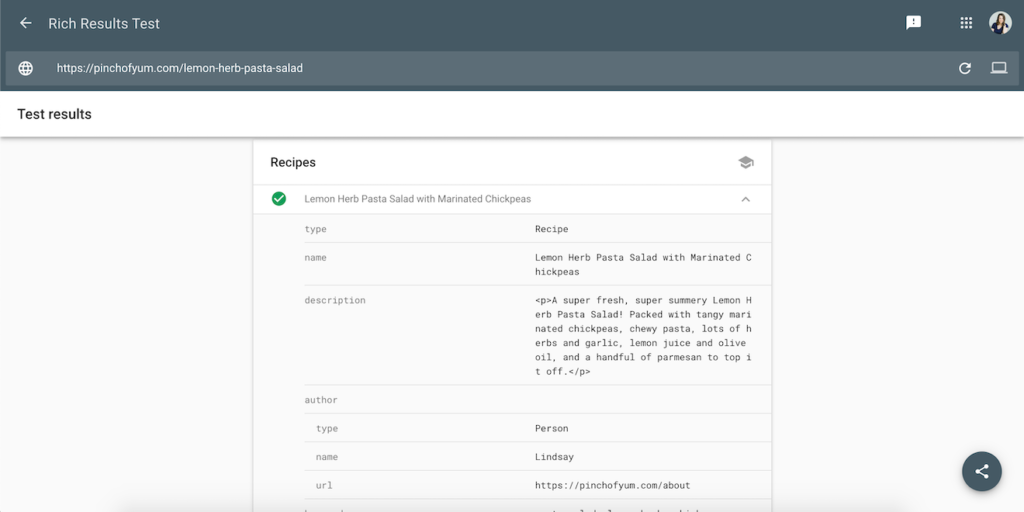
One thing to note is that Warnings won’t necessarily hurt you; a warning is just telling you that you’re not including a certain value that Google recommends. So if you’re not shooting recipe videos, you’ll have a warning for that.
Errors, on the other hand, should be fixed immediately. You’ll get an error if you’re missing a required piece of information in your post.
We like to include as much information as possible in our posts, so if we have the values for the recommended and required fields, we include them.
If you’re not seeing updates to your search results immediately, you can nudge Google to show your updated information by submitting your URL for reindexing in Google Search Console. If you want to learn more about this free tool, we have a whole course about it on Food Blogger Pro!
How did it go? I’d love to hear if you successfully made these changes or had any issues along the way.
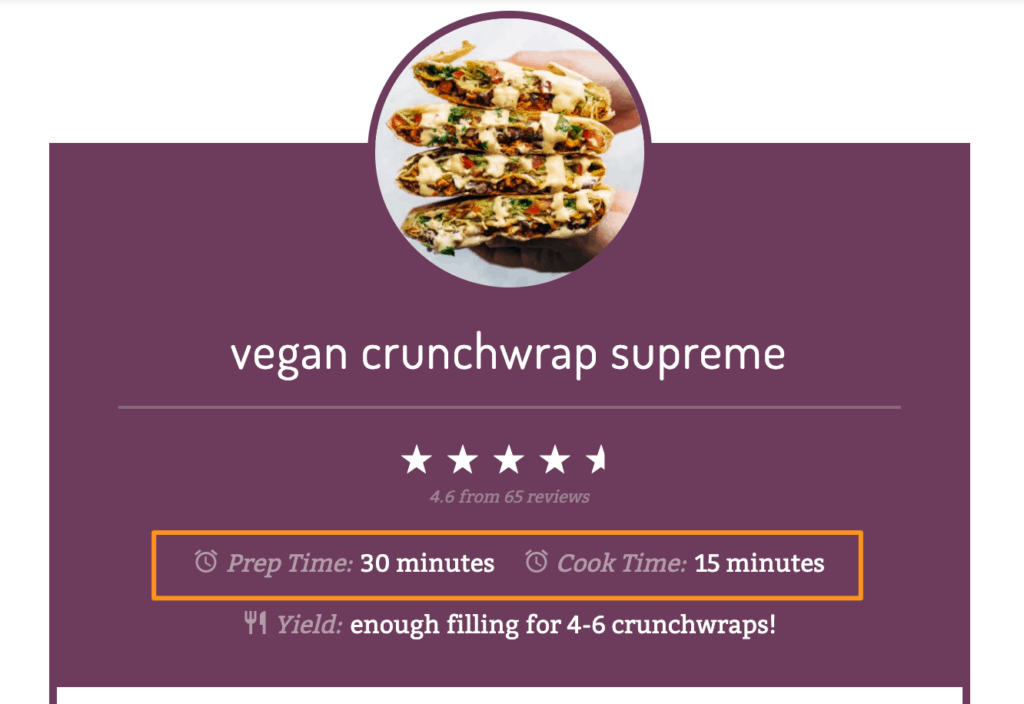
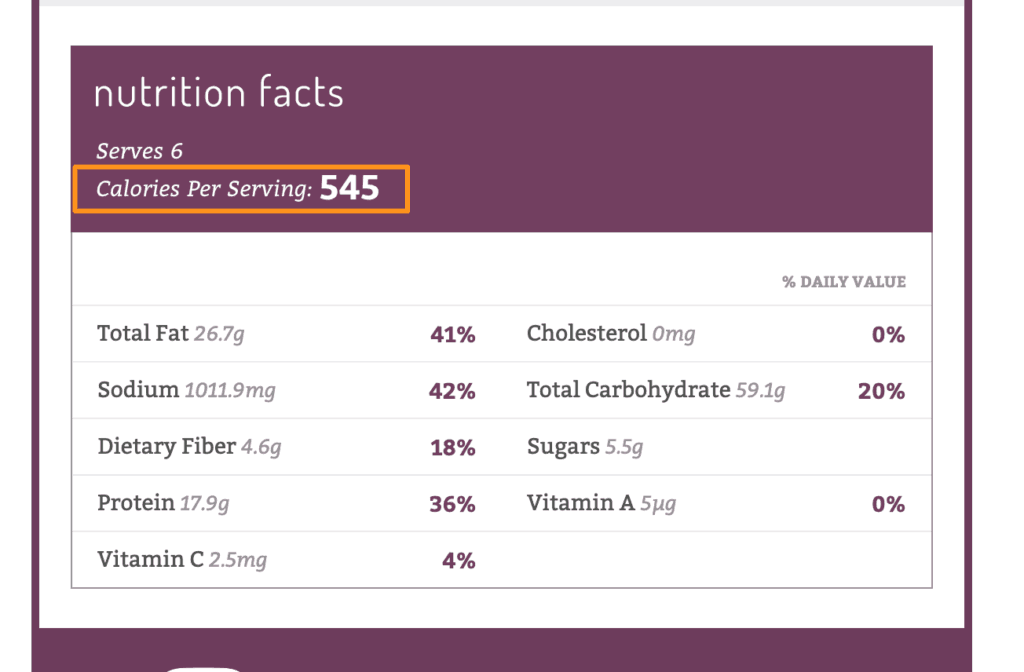
Thanks for that, helped alot!! 🙂 Gemma at dietitianwithoutborders.com
This might be a dumb question, but I’ve noticed that sometimes Google
will show my thumbnail image and sometimes not. I thought it was part
of the Google voodoo magic. Is there anything I can do to encourage
them to show the image?
No dumb questions Denis. 🙂
The best thing you can do is make sure that your recipes are probably formatted with the correct meta data. The easiest way to do this is to use a plugin like Tasty Recipes. You can check to make sure that your post is probably formatted using Google’s Structure Data Testing Tool.
This would be a good thread to check out for more info: https://www.foodbloggerpro…
I use Easy Recipe Plus, and there is no “Photo” tab for selecting how the Google Recipe View should be. I’ve got lots of other tabs (General, Label, Print Styles…). Any idea why my tabs might be different than yours?
Thanks!
Hey Shelly. I think you’re looking at the Easy Recipe General Settings. You want to be looking at the settings when you’re editing the recipe within the post.
Ah, brilliant! Thanks Bjork!
Hi Bjork! I love your wife’s blog, and am so happy I found yours lately! I really enjoyed this article. I have the attached fields that automatically show up under my post main entry field. Will using these fields accomplish the same as the SEO plugin you recommend, or should I still download the plugin? (I try to keep my number of plugins as low as possible, as I’ve seen working at a web dev firm that WordPress plugin updates can mess up a site!)
Yep! As long as it populates with a new title and description then the outcome will be the same. You can double check by viewing the source on the blog post. http://www.computerhope.com…
Thanks!
It was perfect the first time. I learn so much from you as well! Keep it up great post.
Yay! So glad to hear it. 🙂
Thanks for this info. I tried the Structured Data Testing on my latest post and it came back with one error “a value for the image filed is required”. I don’t understand what that means so that I can fix it. Also warnings regarding my recipe plug-in, not including all of the elements. I am still working on adding all of those to my recipes.
Is this information covered in another training?
Thx.
Hi, Cheryl!
What recipe plugin are you using? You’ll want to make sure that you’re filling out ALL of the information you can in that recipe plugin.
We have a course on recipe plugins on FBP for members, and we have this blog post that might help: https://www.foodbloggerpro.com/blog/choosing-a-wordpress-recipe-plugin/
https://search.google.com/test/rich-results?utm_campaign=sdtt&utm_medium=message
seems to be what Google would prefer creators use to test the web pages…the Structured Data Test Tool is being depracated.
You’re right! I updated this post to reflect that. 😊
Hi Alexa!
I have recipes that are ranking first result on Google, and I’m using the Tasty Recipe plugin BUT none of the recipes that I rank for are showing up in the “google recipe cards” feature that now shows up at the top of google recipe searches. WHY? I can’t seem to find any SEO info about this other than “make sure you have structured data and rich results” (which I do). I’m hoping you or Bjork would know (crossing my fingers!) And if you know of any Food Blogger Pro podcasts or other podcasts or articles or something that could help me solve this problem I would be forever grateful. I just can’t seem to figure this one out! -Emily @ The Goldilocks Kitchen 😊
Hi, Emily!
Totally understand where you’re coming from, and it can be so tricky to figure out this process.
Have you tried testing your recipes using the rich results testing tool or on Google Search Console? Here are a few articles that have more info about that process:
https://www.wptasty.com/blog/how-to-use-the-google-rich-results-test
https://www.wptasty.com/blog/guided-recipes
Going through those steps might help you figure out if you have any errors! Let me know if that helps and if you have any other questions. 😊
Thanks for the helpful info!
You’re welcome! So glad you found this post useful.
I found this article incredibly insightful and practical for improving search results on my food blog. The step-by-step approach and tips provided are clear and actionable. Thank you for sharing such valuable information!
Glad you found it helpful!